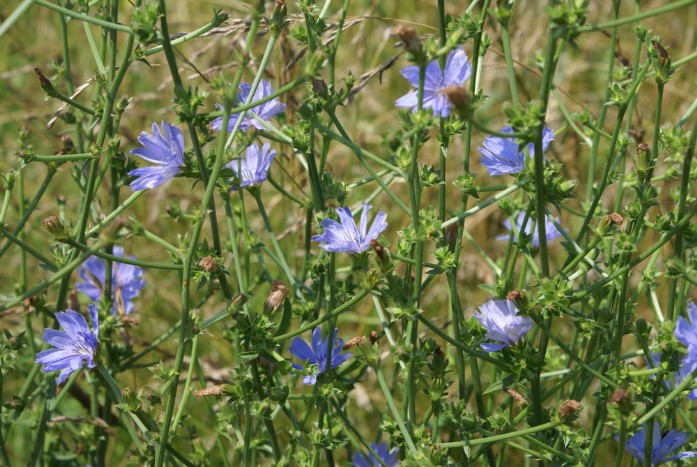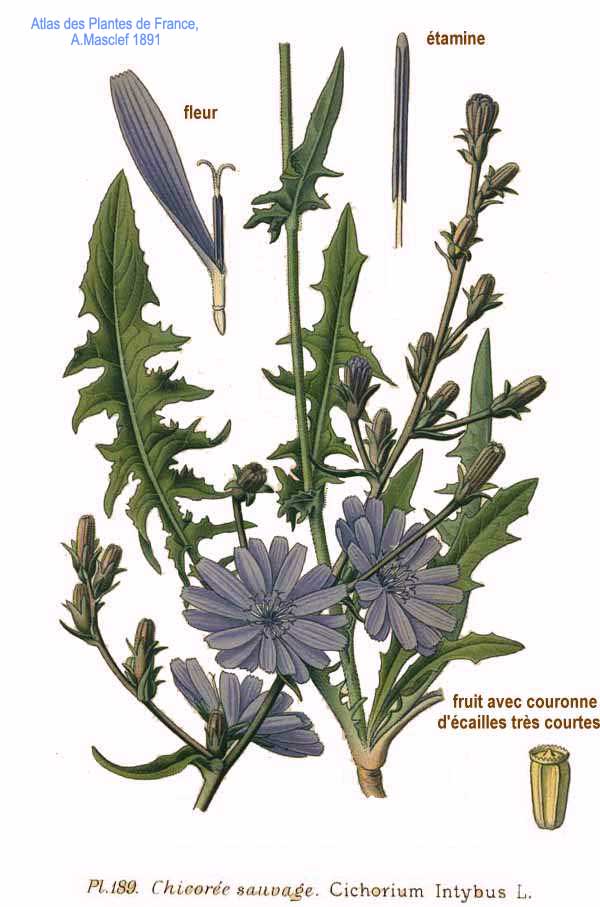Chicory
Herbs A-Z > Know your herbs
Chicory - Cichorium intybus

Chicory - Cichorium intybus
Chicory is a tall, woody, biennial herbaceous plant belonging to the dandelion family (Asteraceae). The flowers are commonly light blue but they can be white or pink. As a wild plant it is often found along roadsides all over Europe as well as on disturbed ground at the edges of ploughed fields. Chicory is also now naturalised in North America, Australia and China.
Chicory as food
Many varieties of chicory are grown for its leaves, often in the dark, to create tight pale crisp blades for salads or ‘chicons’. (Another variety, Radicchio, has red and white leaves). The roots of C.intybus var.sativum are roasted and ground to a powder that is used to replace coffee. In some parts of Europe wild chicory is grown for cattle fodder. Wild chicory leaves are bitter but are valued in rural areas of Italy, Greece, Turkey and Syria, often replacing spinach in local dishes.

Chicory as medicine
The root contains volatile oils similar to those found in other plants in this order. Chicory is highly toxic to gut parasites which has helped farmers keep their livestock worm-free. Development work in this area has largely taken place in New Zealand.
Chicory root extract is a dietary supplement or food additive and is a valuable source of soluble fibre. The root may contain between 13% and 23% inulin by weight. Inulin has been shown to help with weight loss, constipation, and improving bowel function.
In Germany the flowers were used in herbal medicine for everyday ailments including gallstones, gastro-enteritis, sinus problems and cuts and bruises. It is also used to help lower blood sugar levels and to treat enlarged liver.
Properties of chicory
The bitter substances are primarily the two sesquiterpene lactones lactucin and lactucopicrin. Other ingredients are aesculetin, aesculin, cichoriin, umbelliferone, scopoletin, 6,7-dihydrocoumarin and more lactones and their glycosides.
Notes on the cultivation of chicory
The germination of wild chicory will be largely down to creating an impoverished area that can be raked about (disturbed) preferably in a sunny corner. The seeds can be sown and watered and the plants allowed to grow to their full height (about 1m). They may need staking. It would be as well to remove the seedheads as they develop as they might seed in other parts of the garden.
